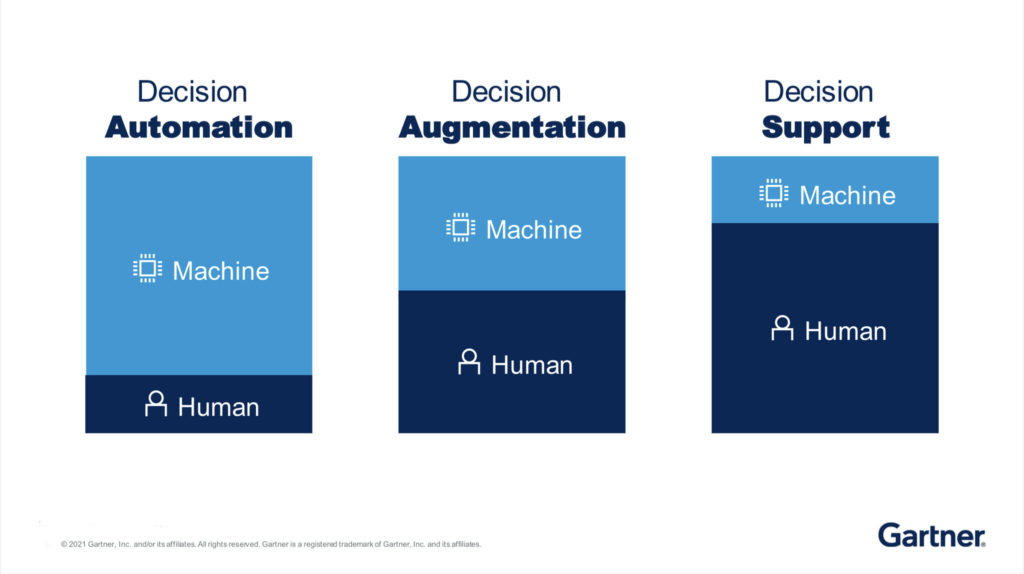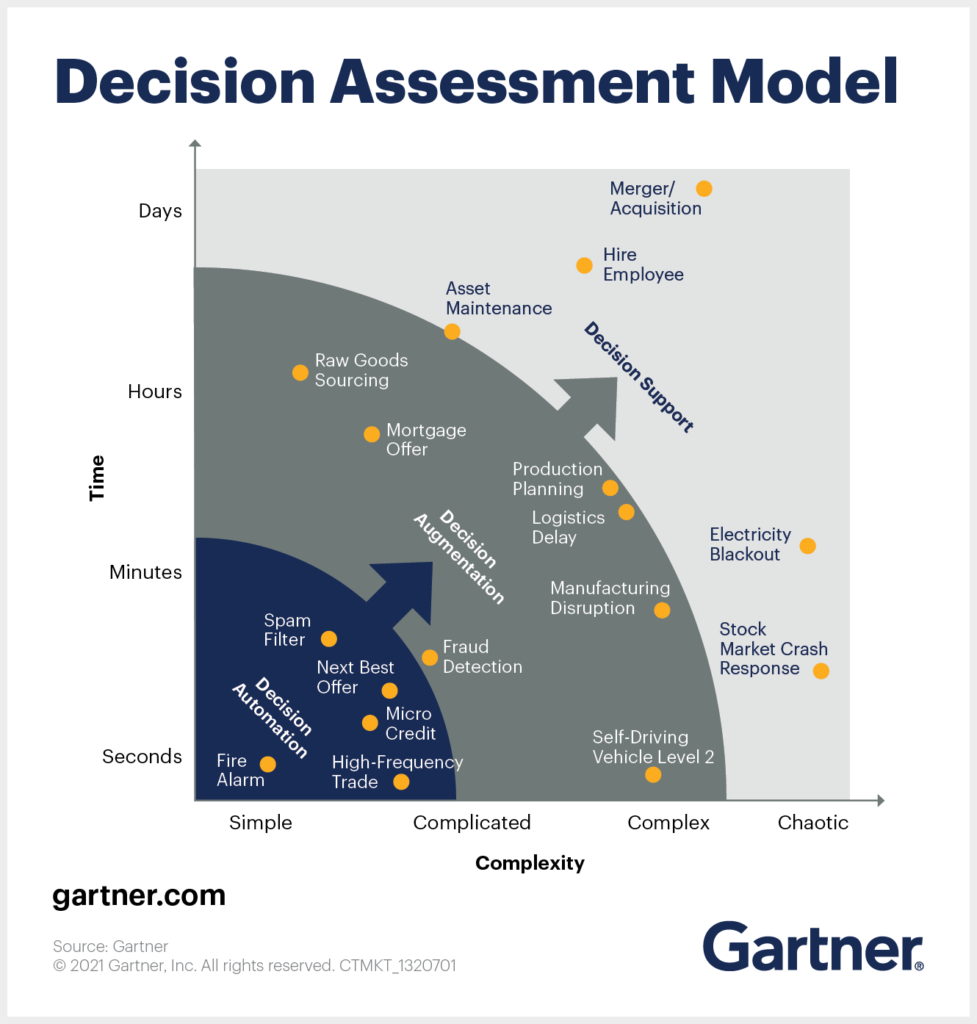US Airforce, PwC, and Deutsche Bahn have recently employed AI to help navigate challenging decision-making in resource scheduling. Moreover, 85% of the Fortune 500 companies do that for many years now.
The most complicated resource scheduling problems involve scarce and expensive resources. They also require navigating through murky waters of unclear business objectives and nontransparent agendas.
“We have too many options!”
I recently met a director of a large company, who struggled with implementing a decision automation system for its planning departments. In their work, they needed to coordinate the plans for three different types of resources. Hence, there were millions of possible assignment options. Moreover, the plan for each resource originated from a different team. As a result, it took a lot of coordination to arrive at an acceptable global solution.
Many scheduling managers deal with such situations every day. For example, in order to make the complexity manageable, they divide the planning processes into waterfall-like stages. As a result, siloed planning teams emerge which frequently lose sight of the global objective of the planning (if there is one). Instead, they focus on polishing their own plan, frequently at the expense of others.
What to do next?
After months of effort, the best the director could achieve was a simple rule-based system. Moreover, when it was implemented, the planners would reject its suggestions. They would rather “work around the system” than “work with the system”.
To help him go ahead, I suggested that he answers two questions:
- What would we like to achieve with the new system?
- Which paradigm of decision support would work best for us?
The answer to the first of these questions depends on the context of each individual project. For example, we could aim at maximizing profitability, minimizing costs, or maintaining high customer service quality. In most contexts, it would be a combination of all of these. I will devote a separate post just to this topic.
Choosing the right paradigm
To answer the second question, we need to know more about the paradigms of decision support systems and the criteria in which they work best.
Decision support paradigms
Recently Gartner suggested a very useful classification of decision support/automation paradigms. They differ by the degree, to which humans and machines are involved.

Decision automation systems take advantage of predictive/prescriptive analytics tools to take an automated decision in a fast, scalable, and consistent manner. In particular, human involvement is low – it is usually limited to setting the decision guidelines at the beginning of the system’s operations or intervention in exceptional cases.
Decision augmentation systems try to extract the best from both the human and the machine actor. In such systems, machines use advanced techniques to come up with numerous suggestions and recommendations. The human decision-maker then reviews and validates them.
Decision support systems rely on the knowledge, experience, and intuition of the human decision-maker. In turn, the role of the machine in such a system is limited to providing visualizations, alerts, and other forms of insight required in the decision-making process.
Selection criteria
To decide, which of the paradigms to use, Gartner suggests assessing the decision-making contexts against two criteria:
- Time – period between observing the need for a decision and the decision itself. It could be anything between microseconds to months or years.
- Complexity – following the so-called Cynefin framework, we could classify the decisions as:
- Simple, which boil down to a clear cause and effect relationship,
- Complicated, which require expertise or analysis to identify cause and effect,
- Complex, which involve multiple relationships and interdependencies,
- Chaotic, which have unknown causes and effects, with unclear or dynamic interdependencies.
We can look up our decision-making context on the chart below.

Using AI for resource scheduling decisions
This brings us back to the initial question – should we let AI decide about our resource schedules?
Decisions concerning resource schedules take many forms and have varying degrees of complexity. For example, they range from choosing a vehicle from the available pool for the next transportation task (simpler) to determining the requirements for the new vehicle fleet (more complicated and sometimes complex).
These decisions also have varying degrees of urgency – from days or weeks for long-term plans to minutes for emergency rescheduling. That places many pay decisions in the Decision Augmentation zone, although longer-term planning may require more involvement from human decision-makers.
As I mentioned in the beginning, 85% of the Fortune 500 companies use some kind of AI support in decision-making.
This entry was originally published on jonaszstaszek.com. We invite you to bookmark this address for more content on mathematical optimization and AI in planning!

